10 Things About The 2019 Yamaha YZ250F
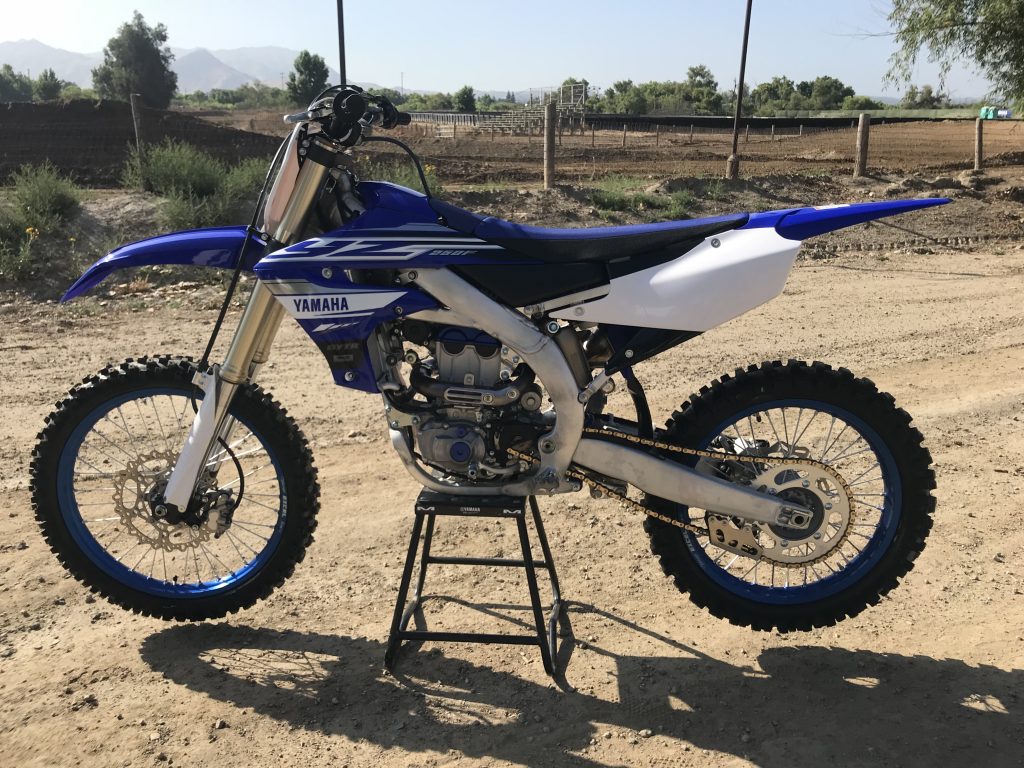 We had to sit on all this information for a while now because of Yamaha’s test embargo, but we are finally here and can speak about what the 2019 Yamaha YZ250F is like to ride! The 2019 YZ250F is an all new machine and follows suit of some of its big brother’s chassis parts and has an added new character to its engine package. What exactly is that character? What about the chassis changes? How does it corner? Well read on and find out!
We had to sit on all this information for a while now because of Yamaha’s test embargo, but we are finally here and can speak about what the 2019 Yamaha YZ250F is like to ride! The 2019 YZ250F is an all new machine and follows suit of some of its big brother’s chassis parts and has an added new character to its engine package. What exactly is that character? What about the chassis changes? How does it corner? Well read on and find out!
1- Yamaha kept the reward slanting engine design (for 2019 the engine is slanted forward 1 degree from the 2018) that already worked so well on the last model and made some changes to make it even better. Starting by adding electric start, Yamaha is the second Japanese manufacturer to have an e-start 250F motocross bike. The exhaust port shape was slightly modified so it transitions to the head pipe (which shape has also been changed to accommodate this) better and has increased the flow rate. Also in the head, Yamaha has increased the intake valve lift, and slightly changed the angle of the exhaust cam. The final changes to the new head are larger lifter buckets and slightly stiffer valve springs. Underneath the head, the piston crown has been increased, which has bumped the compression from 13.5:1 to 13.8:1.
2- The throttle body on the 2019 has changed from Keihin to Mikuni. It is 44mm and has a 12 hole injector. Also different on the throttle body is the cold start (choke) which now has to be pushed in to be activated and is deactivated by fully closing the throttle. Along with the engine changes and new fuel system, the ECU settings have been updated. The new dual electrode spark plug’s cap now has a finger holder keeping the cap firmly in place. The transmission side of the engine has also received key changes including a heavier duty clutch. What makes the clutch stronger is larger plate diameter, 6 clutch springs (one more than last year), and thicker steel plates (which in turn reduced the number of friction plates from 9 to 8). The transmission gears have also been updated and are using a high impact steel.
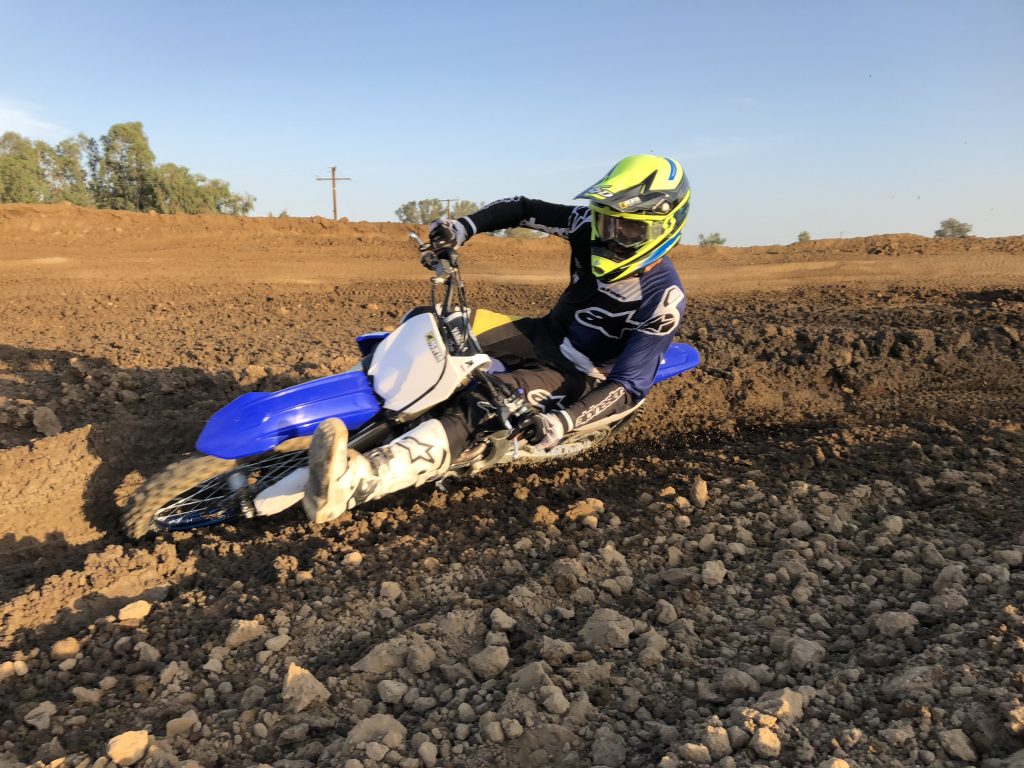 3- The new e-start is a compact, sits behind the cylinder, and drives the clutch basket directly. The 1.5 pound lithium battery sits under the rear of the seat and has a capacity of 2.4AH and 13.2volts. The amount of power the YZ 250F needs to generate has been reduced because of the addition of the battery which means there is less resistance on the stator/engine.
3- The new e-start is a compact, sits behind the cylinder, and drives the clutch basket directly. The 1.5 pound lithium battery sits under the rear of the seat and has a capacity of 2.4AH and 13.2volts. The amount of power the YZ 250F needs to generate has been reduced because of the addition of the battery which means there is less resistance on the stator/engine.
4- The frame on the 2019 has been majorly changed to make the bike feel more nimble on the track. The frame rails that go around the gas tank/air box are now straight where last year had more of an S shape. Other parts of the frame have been changed from forged pieces to extrusion aluminum, and the engine mounts have been changed from steel to aluminum. The material at the swingarm mount have been increased front to back and narrowed side to side, making the side of the frame flatter at the swing arm mount. The steering head has also been moved forward 6mm to help with stability.
5-In the past there have been comments about the seat height and width of the YZ 250F. Yamaha has changed that by making the seat slightly flatter, shorter, and narrower than last year’s model. Along with the seat, Yamaha has narrowed up the plastic where the rider’s knees contact the shrouds. The new shrouds have the air ducts integrated into them (same as 450) and the whole top part of the shroud no longer has to be removed to service the air filter. The air filter cover now only needs one Dzus fastener to be removed for access to the air filter which is no longer held in by a screw, instead it’s held in via rotating clips.
6- Yamaha tried to lighten the bike up by using thinner, higher strength material for the handlebars, and also using lighter rims. To help with stability, they increased the surface area of the wheel collars where they contact the fork lugs and added more material to the rear collars. The KYB forks use new internals including a new piston, cylinder, mid speed valve, pressure piston, and stiffer spring rates (from 4.6N/mm to 4.7N/mm). The shock reservoir volume has been increased by 30cc and the coil spring now has less winds, is made of a thinner material (lighter), and the rate has changed from 54N/mm to 56N/mm.
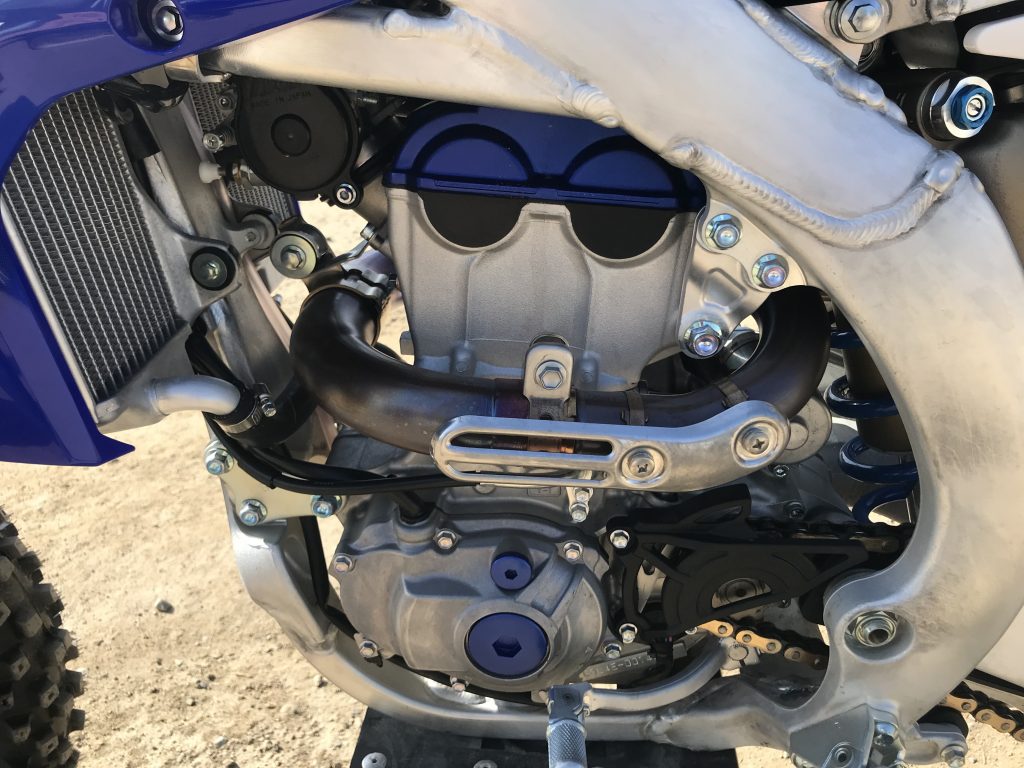
7–How does the engine feel compared to the 2018 version? The 2019 doesn’t have that low RPM response like the 2018 (and I am talking below 6000 RPM), but what it lacks at very low RPM it makes up for in puling power. It pulls harder out of corners and has more of a free/exciting feeling engine. There is more meat coming out of corners and it can be left in second and third gears longer than the 2018 machine. The free-er feeling engine character helps with chassis balance and makes the 2019 YZ250F feel lighter on the track. The 2018 lacked top end, but the 2019 engine likes to be revved out farther through mid-top end. Is it as fast as a KTM on top? I don’t think its quite that good, but it’s definitely closer than in years past. The 2019 engine is like a 3.25 compared to a 3 (if you know how my testing scale works).
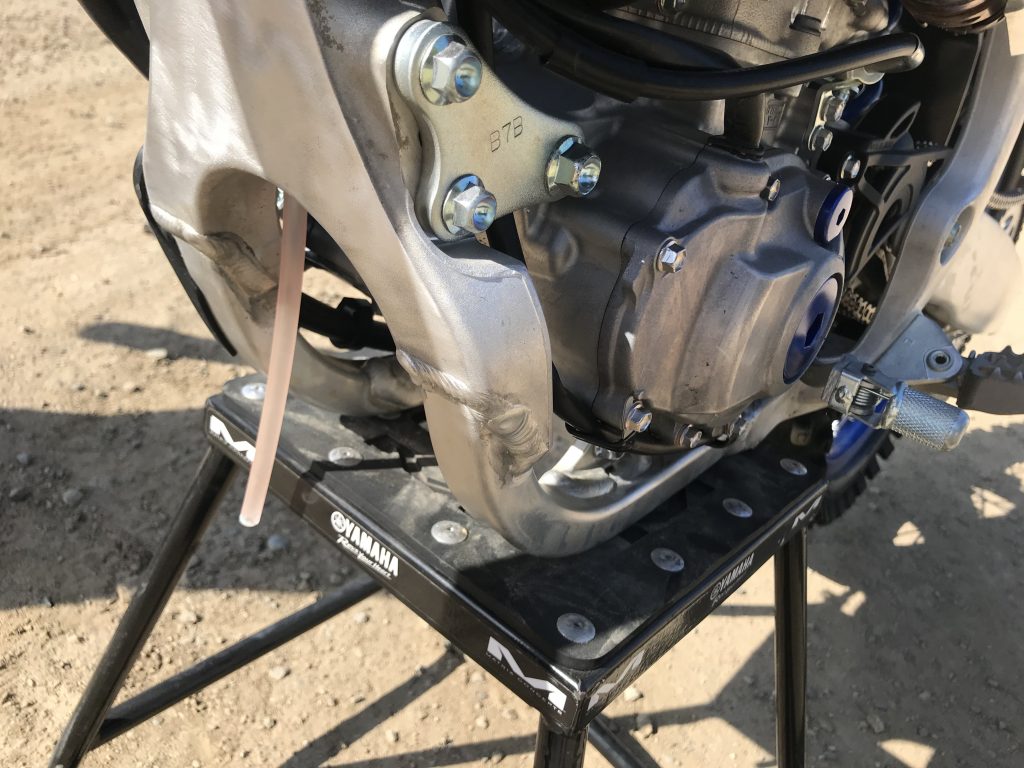
8– Where I feel the most positive change to the 2019 is in the chassis. The firmer feel of the 2019 Yamaha makes the bike feel more planted and have more of a positive front end feeling through corners. Where the 2018 kind of felt lethargic/slow to react to the rider, the 2019 feels slimmer and more nimble (from the swingarm pivot forward, but more on that in a minute) yet has a better straight line character on fast choppy tracks. The easiest way to describe the way the 2019 feels is: a spunky cornering character with a confidence inspiring straight line feel. The 2019 YZ250F can get in and out of corners with less effort and the rider can come into corners harder with less pitching than the 2018.
9- The 2019 KYB SSS fork is also an improvement with its stiffer settings. With the chassis changes Yamaha made, the KYB fork compliments those changes wonderfully. The fork does not dive as much on de-cel and stays up in the stroke more. This leaves the rider with a more balanced feel coming hard into corners. The rear of the bike needs to have a higher sag number (100mm) for 2019, but feels lower in the rear compared to the 2018 (102mm). I also notice more traction from the rear end not only on acceleration, but also on de-cel on the freshy. On de-cel the rear of the bike doesn’t have a vague light feel like last year, which sometimes left you with a rear end “sliding out feel” and then “oh shit”! You’re missing your rut! The rear end of the 2019 YZ250F feels heavier (in a good way), which gave me the sensation of a more connected throttle to rear wheel feel (AKA, meaning a more planted/heavier feel).
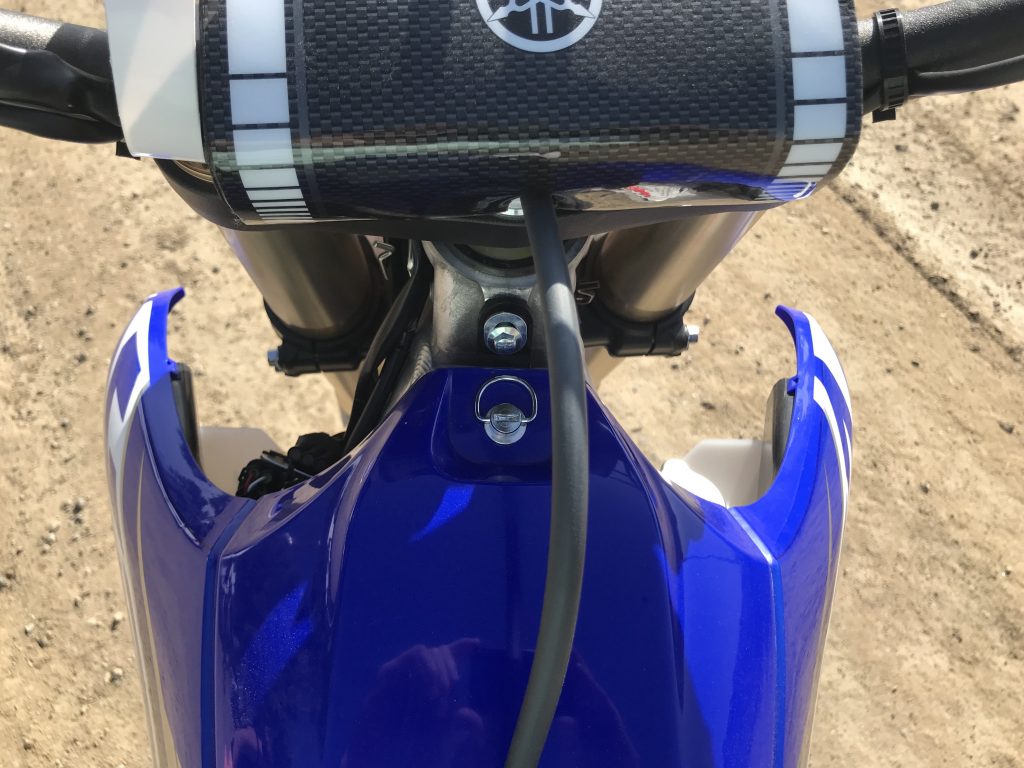 10- Stop with the Yamaha feels fat excuse. Every time I hear this I tell people “go measure your KTM and measure the Yamaha (at the shrouds) and get back to me”. Sitting on the 2019 YZ250F feels better because I feel more upright than “inside” the machine. The whole machine feels slimmer and flatter than the 2018, which to me will fit larger sized riders even better for the new year.
10- Stop with the Yamaha feels fat excuse. Every time I hear this I tell people “go measure your KTM and measure the Yamaha (at the shrouds) and get back to me”. Sitting on the 2019 YZ250F feels better because I feel more upright than “inside” the machine. The whole machine feels slimmer and flatter than the 2018, which to me will fit larger sized riders even better for the new year.
Bonus Information: The 2019 Yamaha YZ250F comes with a handlebar mounted map switch! Yes, you can pre-program two maps with your Yamaha PowerTuner App (it’s free) and switch back and forth with the push of a button. Simply input which map you want on your PowerTuner and send to your WiFi enabled YZ250F. Boom! I liked the stock map a lot, so I left that map in and sent an optional map to my YZ250F to increase low-end! No your YZ450F doesn’t have this, but the 2019 YZ250F does which means that Yamaha might have this feature come 2020 o the YZ450F. You can go to yamaha-motor.com and download optional maps for your 2019 YZ250F right now. It’s easy! If I can do it, you can do it!





